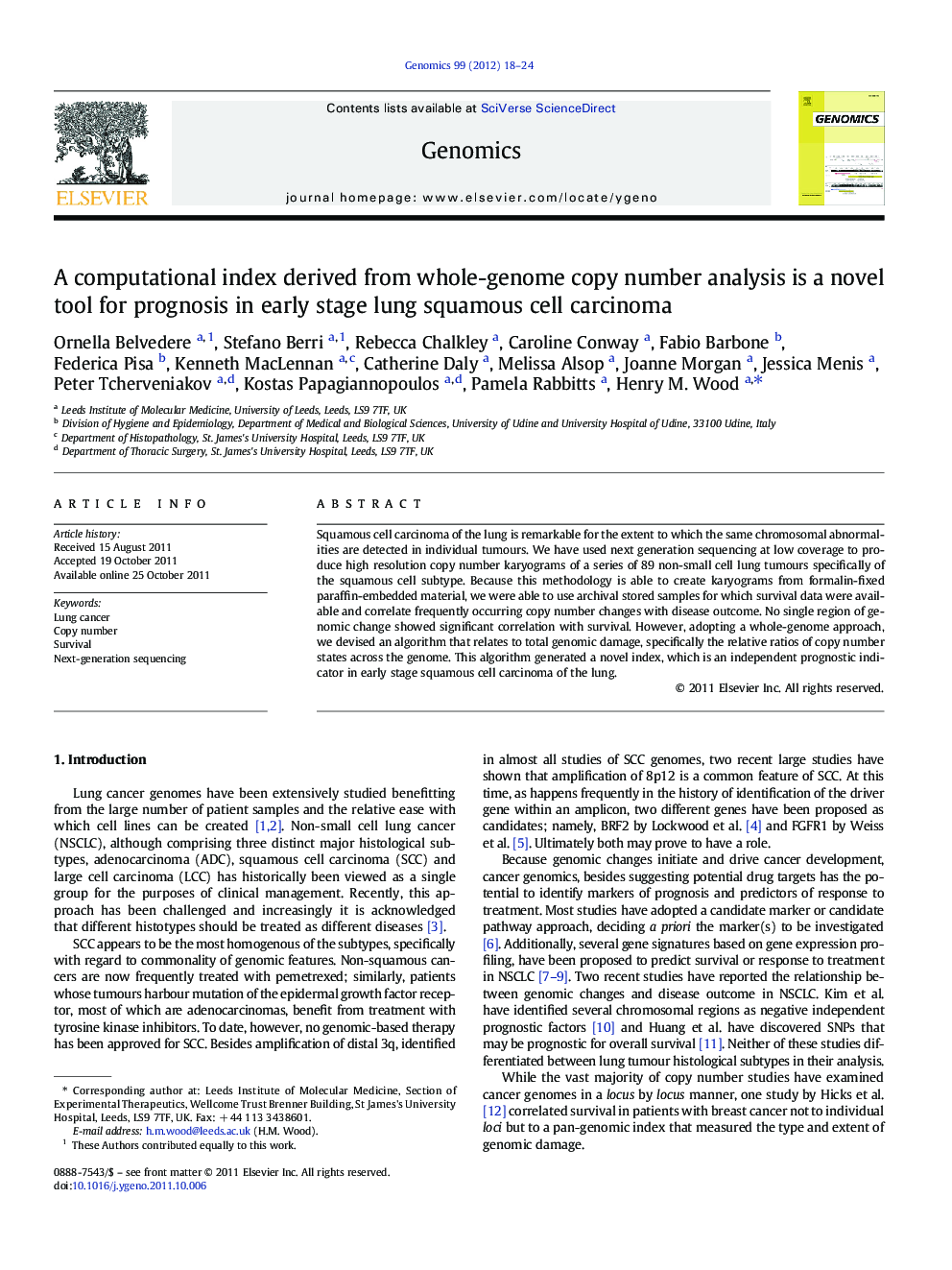| Article ID | Journal | Published Year | Pages | File Type |
|---|---|---|---|---|
| 2820933 | Genomics | 2012 | 7 Pages |
Squamous cell carcinoma of the lung is remarkable for the extent to which the same chromosomal abnormalities are detected in individual tumours. We have used next generation sequencing at low coverage to produce high resolution copy number karyograms of a series of 89 non-small cell lung tumours specifically of the squamous cell subtype. Because this methodology is able to create karyograms from formalin-fixed paraffin-embedded material, we were able to use archival stored samples for which survival data were available and correlate frequently occurring copy number changes with disease outcome. No single region of genomic change showed significant correlation with survival. However, adopting a whole-genome approach, we devised an algorithm that relates to total genomic damage, specifically the relative ratios of copy number states across the genome. This algorithm generated a novel index, which is an independent prognostic indicator in early stage squamous cell carcinoma of the lung.
► We used next-generation sequencing to study copy number in 89 lung tumours. ► No individual genomic regions associated with survival. ► A pan-genomic index linked to total loss and heterogeneity was derived. ► This index had prognostic significance. ► This is a novel way of examining tumour genomes.
